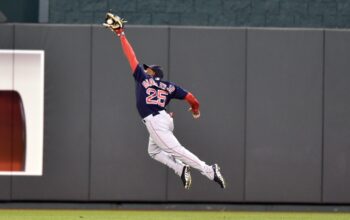 The curveball is considered to be one of the most prestigious pitches to throw. A wonder of physics, the pitcher grips and throws the ball in a way that not only causes a forward trajectory, but also gives it a considerable spin. With the right amount of spin and speed, a curveball can be difficult to hit.
The curveball is considered to be one of the most prestigious pitches to throw. A wonder of physics, the pitcher grips and throws the ball in a way that not only causes a forward trajectory, but also gives it a considerable spin. With the right amount of spin and speed, a curveball can be difficult to hit.
There is some controversy as to the origin of this pitch. Some attribute it to Candy Cummings, a professional baseball was born in 1848 and played for various professional teams, including the Cincinnati Reds. Here’s more information about the origin of the curveball:
Candy Cummings Possibly Invents the Curveball
While the origin of the curveball might be under debate, the National Baseball Hall of Fame does give Candy Cummings the credit. He made his major league debut on April 22, 1876 with a team known as the Hartford Dark Blues. According to information published on Baseball Almanac, Candy developed the curveball after observing the trajectory shell that was flung into the wind. Cummings has said:
‘I thought what a wonderful thing it would be if I could make a baseball curve like that.’
According to the story, that is exactly what he did. He started to experiment with throwing the ball in that manner while playing baseball games with the other boys in his neighborhood. The experiments were successful and he eventually developed the curveball.
Other People Part of the Controversy
There are some who are reluctant to give Cummings credit, stating that it was Phonney Martin who gets the credit for throwing the first professional curveball pitch. For a long time, it was suspected that the pronounced drop of the curve ball was an optical illusion, until photography and lighting advanced to the point where it could be objectively proven to be a product of fluid dynamics, utilizing the Magnus Effect.
One of the early nicknames of the curveball was Uncle Charlie, or sometimes, Lord Charles. This was derived from the name of Harvard President Charles Elliot, who was opposed to the adoption of the curveball and considered it to be cheating. No surprise there, because Harvard was the curveball’s original victim.
The curveball is one of the most important developments in the history of baseball, fundamentally transforming the game. Until then, baseball was primarily an offensive exercise that favored the hitter. The curveball, along with other special pitches like the fastball, brought with them a series of moves by each manager and the pitcher, requiring the hitter to focus with greater concentration.

